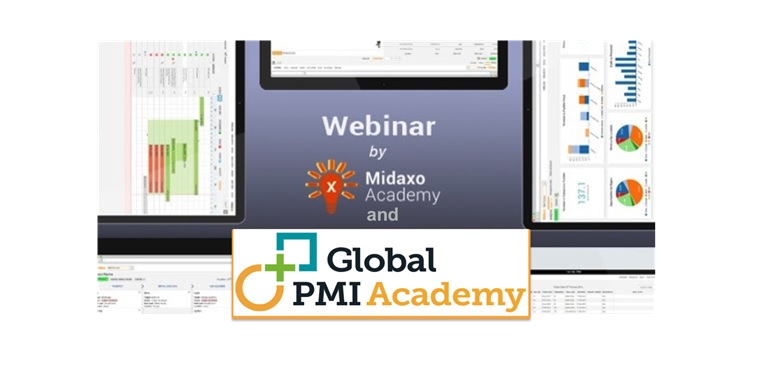Success and Failure in European acquisitions
By GPMIP Benelux Associate Partner, Fabrice Lobet and Partner, Christophe Van Gampelaere
Acquiring for a better tomorrow?
The financial performance of acquirers and targets, the case of European private and public companies
“We are pleased to announce our recent acquisition. The target’s new technology platform is an ideal fit with our core business, and will provide strong growth opportunities throughout our current markets. In addition, the combined entities will achieve significant annual savings thanks to operational leverage. We believe today’s acquisition represents a strategically sound use of capital.”
Announcements like these are common in the world of M&A. Acquirers claim that transactions are based on strong and sound foundations, and the realisation of the value promise is a mere formality.
Why is it then that investors in public companies more often than not fail to recognise the value that an acquisition is supposed to bring? In only about 30% of the cases does the market capitalisation reflect the price paid for the target (see Part 1 in our series of articles, on success and failure in M&A for non-serial public acquirers).
The reader may suspect that perhaps there is a discrepancy between investors’ and management’s insights into the deal potential. Or perhaps the investor does not trust management to deliver on the deal promises. This begs the question:
Is the market in a better position to predict M&A value creation than the acquirer?
In order to answer that question we analysed thousands of acquisitions in Europe, using the Zephyr database of transactions and private/public company financials. We filtered the financial data of more than 10.000 transactions to assess financial metrics over the three-year period preceding and following the closing year of the deal. At the end of this article we elaborate on the selection of data, but let us jump right in to the findings.
THE INCREDIBLE SHRINKING VALUE

Our study’s targets’ average intrinsic enterprise value shrinks by 16 per cent between the year prior to the deal and the third year after the deal. It seems that the market is not entirely wrong in being prudent. How can we explain the gap between what is announced and what actually happens?
M&A is marathon, not a race
We note that acquirers tend to concentrate their M&A efforts and money on the pre-signing period. Market screening, due diligence (often limited to financial, legal and tax) and deal making get the adrenaline flowing. Post-closing value creation is often perceived as a natural continuation, requiring at best some project management.

A winning match
Common sense dictates that the success of an acquisition essentially depends on the strategic fit between the acquiring and acquired entities. Such a fit is a prerequisite to creating value, which typically occurs in the various components of the business model: infrastructure, value proposition, customers, and finances. At Global PMI Partners, we like to work with the Business Model Canvas® to aid clients in defining the M&A strategy, and checking the strategic fit of a potential target.
But strategy, derived from the company’s vision, is just one of six essential dimensions for an acquirer to master if he wants to get the integration right. More about these dimensions in the subsequent articles in this series.
2 Drivers of performance
Two powerful drivers of today’s M&A activity are the commercial and the cost performance – in other words: revenue growth and profitability.
Let it grow, let it grow – let it blossom, let it flow …
Access to new markets as well as commercial leverage of acquired products and technologies are often put forward as major elements of the deal rationale.
The evidence from our analysis however confirms the opposite: the majority of M&A operations result in revenue erosion. Figure 1 illustrates for the median value in our big data sample that the annual revenue growth of the two businesses drops from more than 8% in the year prior to the deal to close to zero after 3 years.

Source: Zephyr & Orbis
Standalone targets see their average annual growth rate contract by 20%, or 0.4 percentage points after a deal (from 2.0 to 1.6 per cent).
This difference is more dramatic when both the acquirer’s and target’s financials are aggregated. The analysis shows that combined entities generated a 6.9 per cent annual growth over the three years that preceded the transaction, reduced to 2.4 per cent for the three years after closing.
Integrated targets, especially the ones that are relatively large compared to the acquirer, are significantly less performant after a deal.
Remarkably, a pattern seems to emerge from the data: high performing firms acquire high performing targets, but when mixed, growth often cannot be sustained.
Actually, the promised growth rarely meets expectations.
The art of profitability maintenance
Most M&A operations are driven by management expectations regarding improved cost efficiency, which should mathematically result in higher margins. Again, our analysis shows evidence to the contrary.
At first glance, transactions do not spectacularly seem to affect the EBITDA (Earnings Before Interest, Tax, Depreciation and Amortisation) margins of the buyer and target. The margins show a slight tendency to contract slightly, by between 3 and 10%, both in combined entities as well as in standalone targets (see Figure 2).

Source: Zephyr & Orbis

About EBITDA
Even though the EBITDA is a valuable financial indicator, it does suffer several flaws when it comes to measuring performance.
A firm can end up with very different EBITDA levels, depending on the way its fixed assets are sourced (acquired, hired, leased). In the context of post-merger integration, the EBITDA number might not capture synergies made on certain assets (which would diminish the depreciation over time).
About EBIT
It therefore seems relevant to test another profit indicator on our company database: the EBIT (Earnings Before Interest and Tax) margin. Figure 3 shows a relative stability of the pre- and post deal EBIT margins of the standalone targets, and a decline of 17% when acquired and acquiring businesses are combined.

Source: Zephyr & Orbis
Compared to the average pre-deal level, the EBIT of Year +2 improved for 40 per cent of the standalone targets. A significant improvement was achieved by only one target out of three.
Four targets out of five in the €10 to 50 million revenue bracket failed to maintain EBIT, compared to about half in the + € 250 million revenue range.
Finally, it is worth noting that cross-border deals generally score better than national deals. Figure 4 presents a graphical overview of our findings.

Source: Zephyr & Orbis
At the end of the day, it didn’t quite work out as expected …
We cannot help but notice that post-deal performance rarely meets initial expectations. The number of transactions where the situation of the target or the new combined entity substantially improves (10 per cent value creation after 3 years) hardly exceeds one tenth of the total.
Our next article
Do these overall statistics hide important underlying industry variations? In our next article, we will analyse a sub-population of standalone target companies with asset intensive activities, i.e. about 300 companies engaged in mining, manufacturing, building and logistics.
Note about the selection of data
We selected the population under study according to the following criteria:
– transactions announced or closed between January 1st 2011 and December 31st 2013
– acquisition of at least 50% of the equity shares
– target companies located in Europe
– target revenue is between € 1 million and € 1 billion (year -1)
– excluding financial, banking, holding and insurance sectors
– financial statements are available for both acquirer and target over a period of 7 years (3 years before the transaction, the transaction year and 3 year after the transaction year).
Note: “Year 0” is the year of the deal closing. The financial year preceding that of the closing (Year-1) is considered to be the reference year upon which most calculations are based.
In order to neutralise bias, we further applied two filters to the population.
First, we decided to exclude from the study those acquirers who have taken over more than one company over the period under review. This allows us to distinctly measure the effect of a single acquisition. This study therefore does not measure how successful serial acquirers are at integrating their targets.
Second, we withheld only those instances where either
– the targets remain significant in size, standalone and measurable, i.e. only if during the three consecutive years after closing at least 80 per cent of the revenue and of the total assets have been maintained,
or
– the target and acquirer become combined businesses, i.e. they have one set of financials, and the target has not been moved away into a sister company.
Of the 10,465 transactions selected, 1,273 have been identified as combined businesses and 1,742 as stand-alone targets.
What are your thoughts on success and failure in M&A execution? Comment and “Like” this post on LinkedIn by clicking here.
About Global PMI Partners
Global PMI Partners is the only global consultancy firm focused exclusively on merger integration and carve-out services. With offices across the US, Europe and Asia, Global PMI supports both private equity as well as corporate acquirers.













